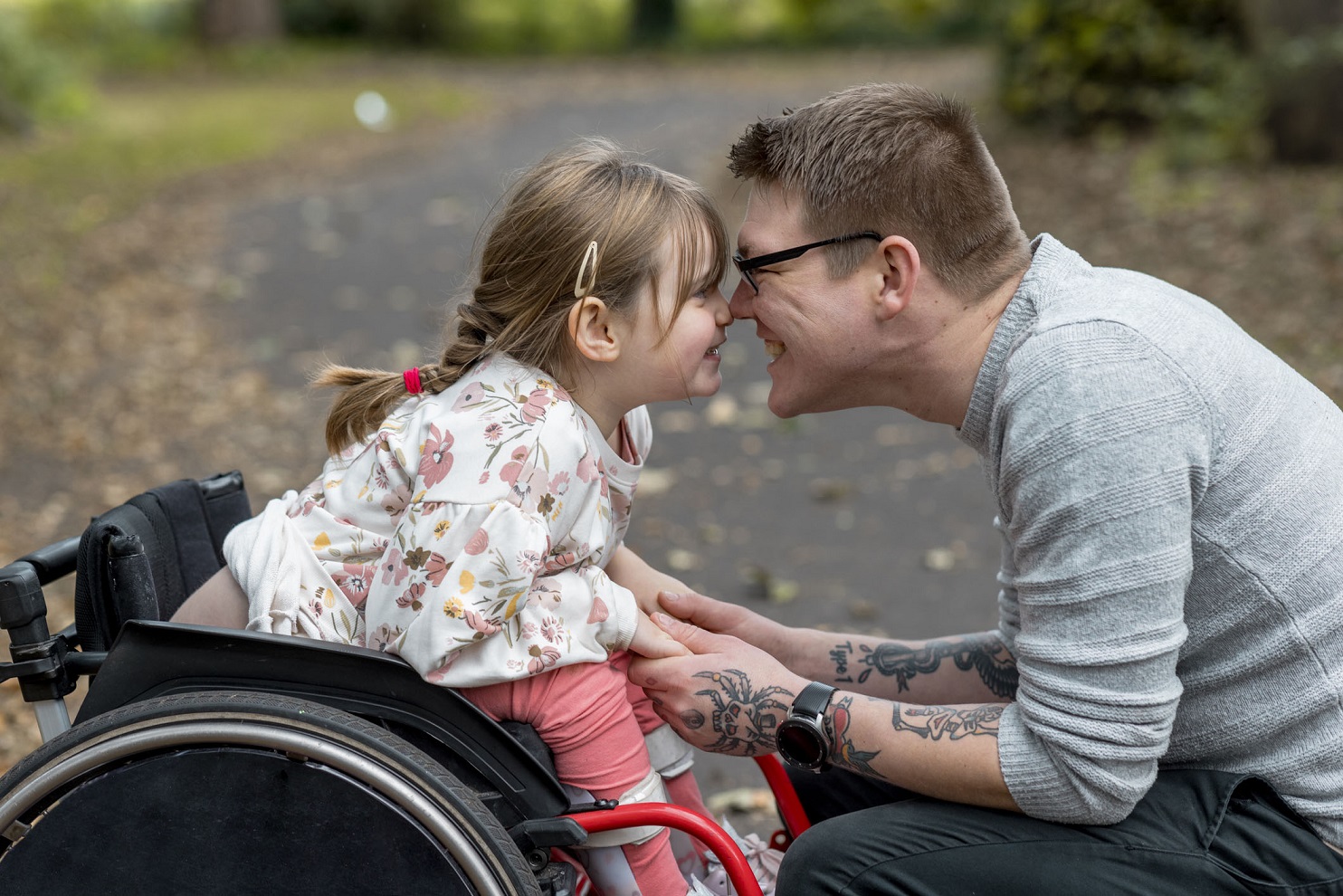Creating Inclusive Spaces for Residents With Special Needs
Creating inclusive spaces within an assisted living community involves more than a standard housing plan—it’s about crafting an environment that enriches the memory and daily life of those with special needs. From adhering to Federal Communications Commission guidelines to ensuring that every corner of the residence caters to individuals with a developmental disability, the priority is a seamless blend of safety and comfort similar to the supportive environment found outside a psychiatric hospital. Such attention to detail sets the stage for a positive living experience, fostering independence and community. This article seeks to shed light on the cornerstones of inclusive design and the transformative impact they have on residents’ lives. Keep reading to discover practical insights into creating a nurturing home for people with varying abilities.
Key Takeaways
- Assisted living must consider universal design for people with diverse needs
- Financial counseling in assisted living helps residents access vital housing benefits
- Special population adaptations can enhance assisted living for veterans and individuals with Autism
- Tactile cues and enhanced lighting are essential for residents with visual impairments
- Smart home technology in assisted living promotes independence and control for residents
Understanding the Basics of Inclusive Design
An individual’s quality of life is significantly influenced by their living environment, particularly when special needs are a consideration. Creating inclusive communities for those with schizophrenia is an essential aspect of this holistic approach. Issues of accessibility present daily challenges that must be acknowledged and addressed to create spaces where everyone can thrive. Professionals in assisted living communities often tackle various barriers that can impede residents’ independence and well-being. Identifying common accessibility challenges becomes crucial as it lays the foundation for designers and caretakers alike to anticipate and eliminate potential obstacles.
Moreover, integrating universal design principles ensures that living spaces not only comply with safety standards but also foster a sense of belonging and dignity for all residents. This inclusive approach takes into consideration diverse needs, ranging from mobility to cognitive conditions, and is beneficial for individuals recovering from substance abuse, those with a history of involvement in the criminal justice system, and participants in programs such as projects for assistance in transition from homelessness. It also extends to serving people who might require tailored learning interventions resembling those a teacher would provide, ensuring that the full spectrum of resident needs is met with empathy and expertise.
Identifying Common Accessibility Challenges
Accessible living spaces are often compromised by economic constraints; residents with special needs may find their choices limited by their financial situation, particularly in scenarios related to tax benefits or liabilities. It is fundamental to incorporate financial counseling into the support services within assisted living, ensuring residents have access to ‘semi-housing’ benefits, which are crucial in affording adequate accommodations.
Additionally, a significant challenge in the design of these living spaces arises in accommodating special populations such as veterans, who may confront unique physical and emotional hurdles. Assisted living facilities are tasked with not only providing for their medical needs, which may be partially covered by Medicare but also creating a welcoming community that supports their transition to civilian life. Furthermore, implementing programs that stimulate cognitive skills, such as mathematics, can greatly enhance the living experience for all residents by promoting mental agility and engagement.
Integrating Universal Design Principles in Spaces
Organizations dedicated to assisting individuals with disabilities recognize that the concept of ‘disability in the United States’ encompasses a broad spectrum of needs. The goal is to integrate design elements that accommodate mobility, sensory, and cognitive requirements by weaving them seamlessly into the architecture of living facilities. Doing so not only nurtures independence but also respects the varied capabilities of all residents.
At the intersection of design and finance, strategic planning ensures that resources are allocated to create environments that stimulate and engage, such as incorporating music therapy areas. This approach addresses the holistic needs of residents while being mindful of funding limitations. Such facilities encourage residents to communicate, often through shared email addresses, fostering community connections and enhancing their quality of living through thoughtful design initiatives.
Essential Features for Mobility Access in Homes
Creating an accessible home environment is pivotal for individuals with limited mobility, stemming from conditions such as epilepsy or other physical challenges. Facilitating ease of navigation and safety within the residence, the installation of ramps and the expansion of doorways cater to wheelchair users, allowing for seamless movement from one area to another. Housing for mentally ill individuals also requires thoughtful modifications to ensure their safety and comfort. Similarly, critical safety measures like non-slip floors significantly reduce the risk of falls, providing a secure base for residents who may experience seizures. In conjunction with these structural amendments, accessible bathrooms are tailored to the specific needs of each patient, supporting their independence in performing daily routines. Each alteration, often financed through mortgages designed to support such modifications, represents more than mere construction; it embodies a commitment to compassionate care, informed by ongoing contact with residents to ensure that their living spaces function in concert with their therapy and overall treatment plans.
Installing Ramps and Wider Doorways for Wheelchair Access
Residents recovering from a traumatic brain injury often face unexpected hurdles in their day-to-day activities. By installing ramps and widening doorways, assisted living homes in Houston are actively removing physical barriers to mobility, thus supporting residents in regaining confidence in their activities of daily living and contributing to their rehabilitation journey.
In the journey from homelessness to a stable living environment, the transition can be stressful, especially for those with mobility impairments. Assisted living facilities that prioritize individualized education programs understand the profound impact that structural adaptations like ramps and wider doorways can have on residents’ autonomy and their ability to participate fully in community life.
The Critical Role of Non-Slip Floors and Accessible Bathrooms
The integration of non-slip floors in assisted living spaces is an indispensable safety feature, drastically decreasing the hazards for residents who may be unsteady due to medication side effects or physical constraints. Such an environment fosters a safe village-like community where individuals can navigate their living spaces freely without the anxiety of potential falls.
Accessible bathrooms tailored to the specific needs of each resident are a hallmark of inclusive design, crucial for those who may otherwise feel a sense of isolation in their daily routines. Assisted living facilities, through strategic recruitment of knowledgeable staff and negotiations with landlords, ensure that each residence is equipped to support the autonomy and dignity of every single resident, regardless of their mobility level.
Sensory-Friendly Environments for Autism Spectrum Disorders
Within the realm of senior living, creating spaces that cater to individuals with autism spectrum disorders is a subject that demands thoughtful attention. The aim is to provide a harmonious balance through design considerations such as utilizing natural light, which is known for its therapeutic benefits and ability to create a serene atmosphere. Reducing sensory overload is also a significant factor; avoiding intricate patterns that can overwhelm the senses is a wise strategy. Furthermore, the establishment of quiet zones and the implementation of soundproofing techniques are necessary to mitigate the impact of noise sensitivity, thereby cultivating an environment where tranquility prevails. By adhering to the standards set forth by the Illinois Department of Human Services and ensuring all modifications are in compliance with proper licensing, assisted living facilities demonstrate their alignment with welfare principles endorsed by the United States Congress, further affirming their commitment to creating inclusive settings for all residents.
Utilizing Natural Light and Minimizing Overwhelming Patterns
Assisted living facilities in Texas are becoming increasingly aware of the educational needs of residents with Autism Spectrum Disorders, leading them to embrace natural light in their design. Ample sunlight has the dual benefit of enhancing learning while fostering a calmer atmosphere, reducing the need for residents to transport between multiple areas for comfort, thus addressing common complaints about disorienting transfers from space to space.
In addition to optimizing natural illumination, these residences are careful to minimize patterns and decor that could overwhelm sensitive individuals. By selecting simple, soothing aesthetics, assisted living facilities ensure that their environments support the cognitive and emotional well-being of residents, thereby upholding their reputation for providing considerate, tailored care.
Creating Quiet Zones and Soundproofing to Reduce Noise Sensitivity
Assisted living properties are now investing in quiet zones and soundproofing to accommodate residents with Autism Spectrum Disorders, recognizing the importance of creating spaces free from auditory disturbances. These measures prevent undue hardship for individuals sensitive to noise, facilitating higher education and therapy sessions in a distraction-free environment.
Securing a subsidy for these modifications allows facilities to lower the noise levels without imposing additional financial burdens on consumers. The result is a serene setting where those with sensory sensitivities can feel at ease, a quiet corner in an otherwise bustling community where peace and calm are preserved.
Safe Spaces for Individuals With Visual Impairments
Establishing supportive and navigable environments for those with visual impairments requires careful and deliberate design choices. A commitment to inclusive living entails the integration of tactile cues and Braille signage, crucial modifications that empower visually impaired individuals to move with confidence and autonomy within living spaces. The National Center for Education Statistics underscores the importance of environments that support educational and self-care development for persons with visual challenges, many of whom may also be coping with substance use disorder. Caregivers in cities like Los Angeles recognize that enhancing lighting and contrast is not simply a matter of convenience; it is a critical component of safety and independence, enabling residents with visual impairments to identify and orient themselves more effectively in their living areas. Aided by these comprehensive solutions, living spaces are transformed into havens of self-reliance, in which individuals who face these visual challenges can navigate their daily lives with greater ease and comfort.
Implementing Tactile Cues and Braille Signage Throughout Spaces
Assisted living facilities in Denver are well aware of the data reflecting the pressing need for inclusive environments geared towards individuals with special needs. By introducing tactile cues and Braille signage in strategic locations, they help visually impaired residents to navigate freely and safely, thereby promoting an improved sense of autonomy and mental health residential well-being.
These enhancements are meticulously planned according to statistics on spatial awareness and are implemented with precision unique to each zip code’s demographic composition. This meticulous attention ensures that all residents, regardless of their visual capacities, can access and benefit from the full range of services provided by their community.
Enhancing Lighting and Contrast to Aid Navigation
Proper lighting serves a dual purpose in care facilities, both illuminating the space and creating visual boundaries that guide the residents with visual impairments. Through the strategic use of contrasts, these alterations to lighting enable special populations within Section 8 housing to move safely and confidently in their quest for independence and permanent housing for the mentally ill.
Behavior patterns among visually impaired individuals are greatly influenced by the visual clarity of their environments. In response, assisted living spaces are embracing enhanced lighting and contrast to provide cues that aid in effortless navigation, thus honoring their commitment to creating supportive, safe, and navigable living conditions for all residents.
Incorporating Technology for Enhanced Independence
In the realm of assisted living, technology is not just about convenience; it’s a powerful ally in fostering independence for residents with special needs. Smart home devices are increasingly playing a pivotal role, offering control and functionality with minimal effort—an advancement in line with guidance from the Office for Civil Rights. The United States Department of Housing and Urban Development recognizes that when technology is harnessed correctly, it can offer personalized support that adapts to the unique requirements of individuals, while still championing data protection and privacy. From voice-activated systems to applications that support literacy development, each technological tool is carefully selected to enhance daily life and encourage autonomy within the assisted living community.
Leveraging Smart Home Devices That Support Special Needs
Within the community, smart home devices are revolutionizing the way individuals with special needs experience daily life. By integrating technology into the fabric of the assisted living environment, a resident’s ability to maintain control over their surroundings is significantly enhanced, facilitating a more dignified life for all, including the mentally ill homeless transitioning into a stable living space under a supportive lease agreement.
Assisted living facilities that adopt these intelligent systems embody the spirit of equal employment opportunity, enabling residents to participate as active members of the workforce through the use of assistive devices. This technology aids in breaking down barriers and creating a more inclusive and empowering atmosphere for individuals with special needs.
Adaptive Tools That Promote Autonomy in Daily Tasks
Adaptive tools provided in assisted living facilities enable residents, particularly those on oak-lined properties, to perform everyday tasks with greater self-reliance. These devices are often covered by Medicaid and other programs, such as supplemental security income, ensuring that no resident is left without the help they need to manage tasks like meal preparation safely and independently.
Diligent inspection processes in assisted living communities ensure that every adaptive tool meets the highest standards of safety and effectiveness. Such oversight is vital, as these devices are critical in fostering an environment where residents can participate in their daily routines without unwarranted reliance on others for basic activities.






